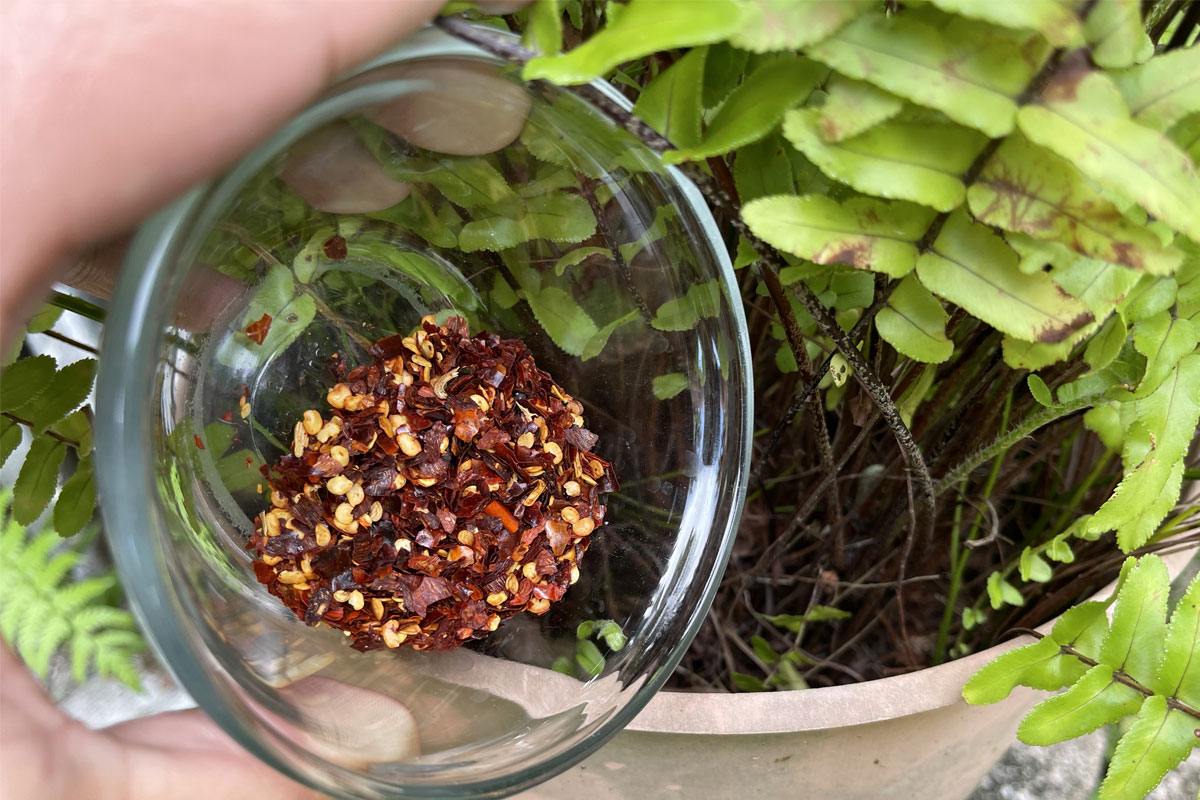Are you at your wit’s end dealing with those bushy-tailed rascals raiding your garden? Fear not, my friends!
We’ve got a secret weapon that will have those squirrels thinking twice before they even consider setting foot (or paw) on your precious plants. Introducing the humble yet mighty cayenne pepper – nature’s fiery deterrent that’s about to become your new best friend.
Now, I know what you’re thinking: “But won’t that just make my garden smell like a Mexican restaurant?” Ah, but that’s where the magic lies! You see, while we humans may find the aroma of cayenne pepper tantalizing, our furry little friends have a different opinion. To them, it’s like a punch in the nose from the spiciest of salsas.
The Science Behind the Spice
Squirrels have an incredible sense of smell, which they rely on to sniff out tasty treats (like your prized tomatoes or freshly planted bulbs). Cayenne pepper contains a compound called capsaicin, which is responsible for that delightful (or not-so-delightful, if you’re a squirrel) burning sensation.
When they catch a whiff of that fiery scent, their little noses go into overdrive, and they quickly decide that your garden is not worth the nasal assault.
Pros of Using Cayenne Pepper:
- Squirrels dislike the strong, spicy taste and smell of cayenne pepper, so it can act as a deterrent when sprinkled around plants, gardens, or areas they frequent.
- It’s a natural, eco-friendly solution compared to chemical repellents.
- Some users reported success in keeping squirrels from digging up plants or eating vegetables/fruits when cayenne pepper was applied.
- It may also help repel other pests like rabbits, deer, mice, and insects.
Limitations and Considerations:
- Results seem to be mixed, with some users finding it ineffective against persistent squirrels.
- Reapplication is often needed, especially after rain or watering, as the pepper can wash away.
- Squirrels may eventually get used to the smell/taste and start ignoring it.
- It may not work well if there are limited food sources, and squirrels are very hungry.
- Cayenne pepper can potentially harm beneficial insects or animals if used excessively.
Tips for Using Cayenne Pepper:
- Use a generous amount and reapply regularly, especially after rain or watering.
- Mix with a bit of dish soap or oil to help it stick to surfaces.
- Try using a combination of deterrents, like motion-activated sprinklers or physical barriers, along with the cayenne pepper.
- Plant hot pepper plants around the area as an additional deterrent.
- Be cautious when applying near edible plants, as residue may remain.
Putting the Pepper to Work
Now, let’s get down to the nitty-gritty of how to use this spicy squirrel deterrent effectively. First things first, you’ll want to stock up on some good ol’ cayenne pepper flakes or powder. You can find these at most grocery stores or online retailers.
Next, it’s time to get creative! Sprinkle a generous amount of cayenne pepper around the perimeter of your garden beds, on the soil, and even directly on the plants themselves (just be careful not to overdo it on edible crops). You can also mix the pepper with a bit of dish soap or vegetable oil to help it stick to surfaces better.
Pro Tip: For an extra punch, try planting some hot pepper plants around your garden. Not only will they add a pop of color, but they’ll also release their own capsaicin-filled aroma, creating a double whammy of squirrel deterrence.
Staying Power and Reapplication
Now, I won’t lie to you – cayenne pepper isn’t a one-and-done solution. Those pesky squirrels are persistent little critters, and they may try to call your bluff after a while. That’s why it’s essential to reapply the pepper regularly, especially after it rains or you water your plants.
Bonus Tip: Mix some cayenne pepper into your bird seed or suet feeders. Not only will it deter squirrels from raiding the feeders, but it won’t bother our feathered friends one bit!
A Multi-Pronged Approach
While cayenne pepper is an excellent natural deterrent, it works best when combined with other squirrel-proofing tactics. Consider using physical barriers like netting or fencing, motion-activated sprinklers, or even those nifty little pinwheel spinners that squirrels just can’t seem to resist playing with (until they get dizzy, that is).
A Word of Caution
Now, as with any powerful deterrent, it’s essential to use cayenne pepper responsibly. While it’s generally safe for plants and beneficial insects, you’ll want to be cautious when applying it near edible crops, as residue may remain. Additionally, avoid getting the pepper in your eyes or nose (trust me, it’s not a pleasant experience).
Embrace the Spice!
So, there you have it, folks! Cayenne pepper is a natural, eco-friendly way to keep those pesky squirrels at bay without resorting to harsh chemicals or expensive deterrents.
Give it a try, and watch as those bushy-tailed bandits quickly learn that your garden is off-limits. And who knows? You might even find yourself developing a newfound appreciation for the humble cayenne pepper – just don’t go sprinkling it on your morning oatmeal!




